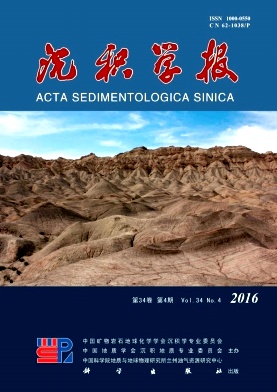Using Spectral Gamma Ray Log to Recognize High-frequency Sequences in Carbonate Strata: A case study from the Lianglitage Formation from Well T1 in Tazhong area, Tarim Basin
doi: 10.14027/j.cnki.cjxb.2016.04.011
- Received Date: 2015-11-13
- Rev Recd Date: 2016-03-13
- Publish Date: 2016-08-10
-
Key words:
- high-frequency sequence /
- spectral gamma-ray log /
- wavelet transformation /
- Lianglitage Formation /
- Tazhong area
Abstract: High-frequency sequences are commonly developed in carbonate strata, and eogenetic karst related to fourth- to fifth- order sequence boundaries are of great importance to the improvement of carbonate reservoir quality. However, how to identify high-frequency sequences objectively is a generally acknowledged issue which has been long been explored. In this study, we analyze the high-frequency sequences of the Lianglitage Formation in the Tazhong area of Tarim Basin, by using the natural gamma ray logging data and utilizing moving average flitering and wavelet transformation methods. Th/U ratio log, after moving average filtering process, can clearly and objectively reflect the depositional cycles, with its increase indicating the deepening of depositional environment and the concentration of clay, and its decrease indicating the shallowing of depositional environment and purer limestone deposits. The Lianglitage Formation in this well can be divided into three third-order sequences, eight fourth-order sequences, and 32 fifth-order sequences, the sea-level change reflected by various rank sequences are well coincided with the three one-dimensional discrete curves derived from wavelet transform analysis. Correlation between wells indicates the third- and fourth-order sequences of the lower part of the Lianglitage Formation vary between different areas in the Tazhong Uplift, and the differences attribute to the distinct paleogeomorphology of the Tazhong Uplift before Late Ordovician. The fourth- and fifth-order sequences are believed to reflect the eccentricity long periods and short periods, respectively, in Milankovitch cycles. The reservoir units in the well are all related to the fourth- and fifth-sequence boundaries. The results of this study are of great significance of analyzing high-frequency sequences in carbonate strata based on well-logging data, as well as forecasting favorable reservoirs in a high-resolution sequence framework in this area.
| Citation: | GAO Da, LIN ChangSong, HU MingYi, HUANG LiLi. Using Spectral Gamma Ray Log to Recognize High-frequency Sequences in Carbonate Strata: A case study from the Lianglitage Formation from Well T1 in Tazhong area, Tarim Basin[J]. Acta Sedimentologica Sinica, 2016, 34(4): 707-715. doi: 10.14027/j.cnki.cjxb.2016.04.011 |






 DownLoad:
DownLoad: